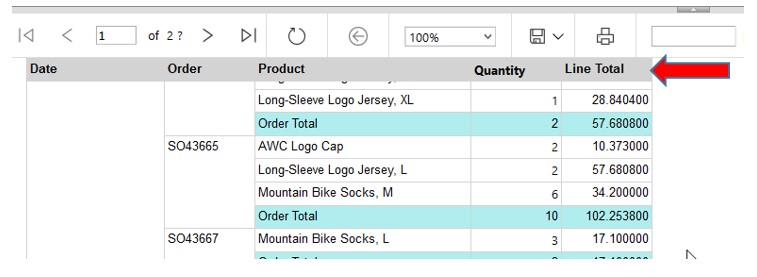The information below is a duplication from article written by
Ginger Keys Daniel posted in
SQLServerCentral site (great SQL resource). It's here so I can have a record incase the original posting is removed. All credits belong to Ginger Keys Daniel. Thank you Ginger.
When scrolling through the pages of a SQL Server Reporting Services (SSRS) report, it is very useful to be able to see the column headers throughout the report. Let’s say you have successfully created an SSRS report using Visual Studio, and everything looks wonderful…except the headers on your columns disappear when you scroll down the page. You have even set the properties of your Tablix to “Keep Headers Visible While Scrolling”, but it still doesn’t work! Trying to keep the column headings visible while you scroll down the page of your SSRS report can be a frustrating endeavor. The following steps will demonstrate how to make it work.
Adjust Tablix Properties
In Visual Studio, make sure you are on the Design tab of your report. Right click on the upper left corner of your Tablix to open the Tablix Properties.
When the Properties dialog box opens, un-check the Keep header visible while scrolling checkboxes for both Row Headers and Column Headers. This doesn’t seem logical, but trust me.
Go to Advanced Mode for the Grouping Section. You can do this in the Design tab of your report, click on drop down arrow on the far right side of the Grouping Section and select Advanced Mode.
A Static property element will show above your Row Groups as shown below. Click on the top Static cell which represents the first column header of the report. A properties box will open on the right side of the page for this Static element.
Change Tablix Member properties for the Static element as shown
- Fixed Data = True
- Keep With Group = After
- Repeat On New Page = True
Preview and Run your Report
Click on the
Preview tab on your report, save it, and deploy the report to Reporting Services. Below you can see the report as shown in SSRS browser.
As you can see below, the page header disappears when you scroll down, but the column headers remain visible. (note: You may need to change the background color of the column headers, else the text will run over one another when scrolling)
Conclusion
Sometimes when creating a report for SQL Server Reporting Services, you want the column headers to remain visible while you scroll down the report page. Adjusting the Tablix properties isn’t as straightforward as it should be, and can be frustrating to figure out. Following the steps above will keep your column headers visible in your reports.






